In the vast, untamed plains of the iconic Masai Mara, a breathtaking spectacle unfolds. Graceful yet robust, agile yet reserved, the impala represents a harmonious embodiment of nature’s wisdom. With mesmerizing beauty and a captivating presence, these enchanting creatures have become revered symbols of Africa’s vibrant wilderness. In this article, we embark on a journey to explore the lives of the impala, delving deep into their mesmerizing world within the heart of the Masai Mara, unravelling the secrets of their survival, and marveling at their poetic existence. Join us as we witness the impala flourish amidst the golden savannah, revealing their multifaceted nature against the ever-changing backdrop of this unique African paradise.
Table of Contents
- The Graceful Impalas of Masai Mara: A Majestic Sight in the National Park
- Understanding the Behavioral Patterns of Impalas in Masai Mara National Park
- Conservation Efforts for Impalas: Ensuring a Sustainable Future in Masai Mara
- Exploring the Impala Population Dynamics in Masai Mara National Park
- Best Time to Witness Impala Mating Rituals in Masai Mara National Park
- Tips for Photographing Impalas in Masai Mara National Park
- Q&A
- Insights and Conclusions
The Graceful Impalas of Masai Mara: A Majestic Sight in the National Park
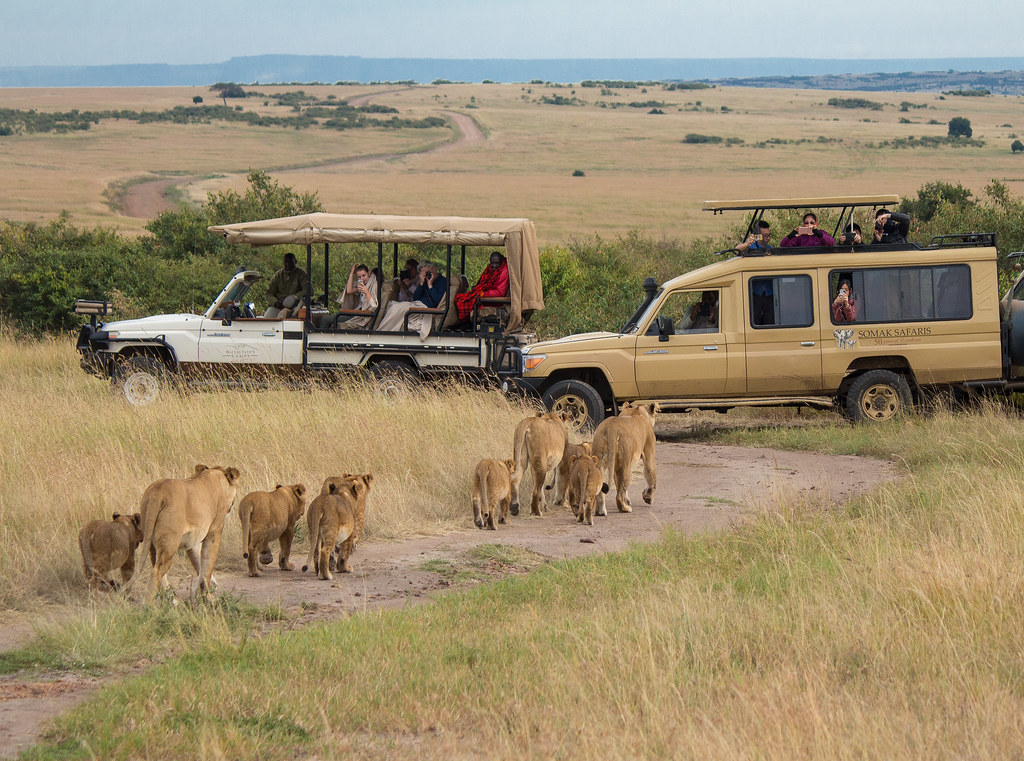
The Masai Mara National Park is home to a wide variety of stunning wildlife, but one creature that truly embodies grace and elegance is the impala. These majestic antelopes can be found in large herds throughout the park, captivating visitors with their beauty and agility.
One of the most striking features of the impalas is their slender and sleek body, perfectly adapted for speed and agility. Their coats, displaying a beautiful reddish-brown color, gleam under the African sun, making them almost appear golden. The males boast long, lyre-shaped horns that curve gracefully above their heads, adding to their regal appearance.
Observing impalas in their natural habitat is a mesmerizing experience. As you watch them move through the grasslands, their lithe bodies and nimble legs effortlessly carry them across the terrain. Witnessing impalas leaping with astonishing grace, their hooves barely touching the ground, is a truly awe-inspiring sight. It is no wonder they are often referred to as the “ballet dancers” of the Masai Mara.
In addition to their graceful movements, impalas exhibit remarkable adaptability. They are capable of surviving in a range of environments, from open grasslands to dense woodlands. Their ability to swiftly change directions and jump over obstacles allows them to navigate the savannah with ease, making them a fascinating species to observe.
During breeding season, which typically occurs between May and August, the impalas put on a stunning display of courtship rituals. Males compete for the attention of females by engaging in vigorous fights, locking horns and showcasing their strength. This captivating spectacle can be witnessed firsthand in the Masai Mara, further adding to the allure of these magnificent creatures.
The impalas play a crucial role in the ecosystem of the Masai Mara National Park. They provide a primary source of food for predators, such as lions and cheetahs, while their grazing habits help maintain the balance of the grasslands. Their presence adds a touch of elegance to the already breathtaking landscape of the park, making the Masai Mara a true haven for these graceful creatures.
Understanding the Behavioral Patterns of Impalas in Masai Mara National Park
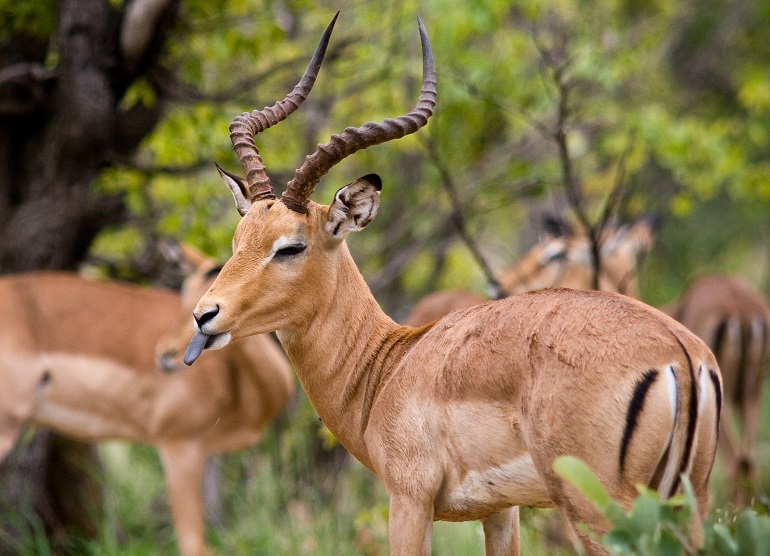
The Masai Mara National Park in Kenya is not only renowned for its stunning landscapes and diverse wildlife, but it is also home to a fascinating species known as the impala. These graceful creatures are commonly spotted in the park, exhibiting intriguing behavioral patterns that have long fascinated both wildlife enthusiasts and researchers.
One of the most striking aspects of impala behavior is their social structure. These herbivores form large mixed-sex herds, typically consisting of females, young offspring, and a dominant male known as a ram. The rams establish their dominance through impressive displays of stotting, which involves leaping high into the air with their slender bodies fully extended. This behavior not only shows off their physical prowess but also serves as a means to attract females and deter potential predators. It is truly a sight to behold in the expansive grasslands of the Masai Mara.
- Impalas are known for their exceptional leaping ability, allowing them to effortlessly clear obstacles and evade predators.
- During the mating season, rams engage in fierce territorial battles, using their mighty horns to establish dominance and secure mating rights.
- Even though impalas are primarily grazers, feeding on a variety of grasses and herbs, they have been observed resorting to browsing as well during times of limited food availability.
The Masai Mara National Park provides the impalas with a pristine habitat to thrive. The abundance of grasslands and water sources create ideal conditions for these majestic creatures to graze and reproduce. It is common to spot impalas roaming freely through the park’s open savannah, showcasing their agility and grace with every leap. Their keen alertness and innate ability to blend seamlessly with their surroundings make them a fascinating subject for wildlife photography enthusiasts as well.
Understanding the behavioral patterns of impalas in the Masai Mara National Park not only allows us to appreciate their beauty but also highlights the delicate balance of nature in this remarkable ecosystem. As visitors to the park, we have the privilege of witnessing the intricate dynamics of these impressive herbivores, offering us a glimpse into the mesmerizing world of wildlife in the heart of Africa.
Conservation Efforts for Impalas: Ensuring a Sustainable Future in Masai Mara
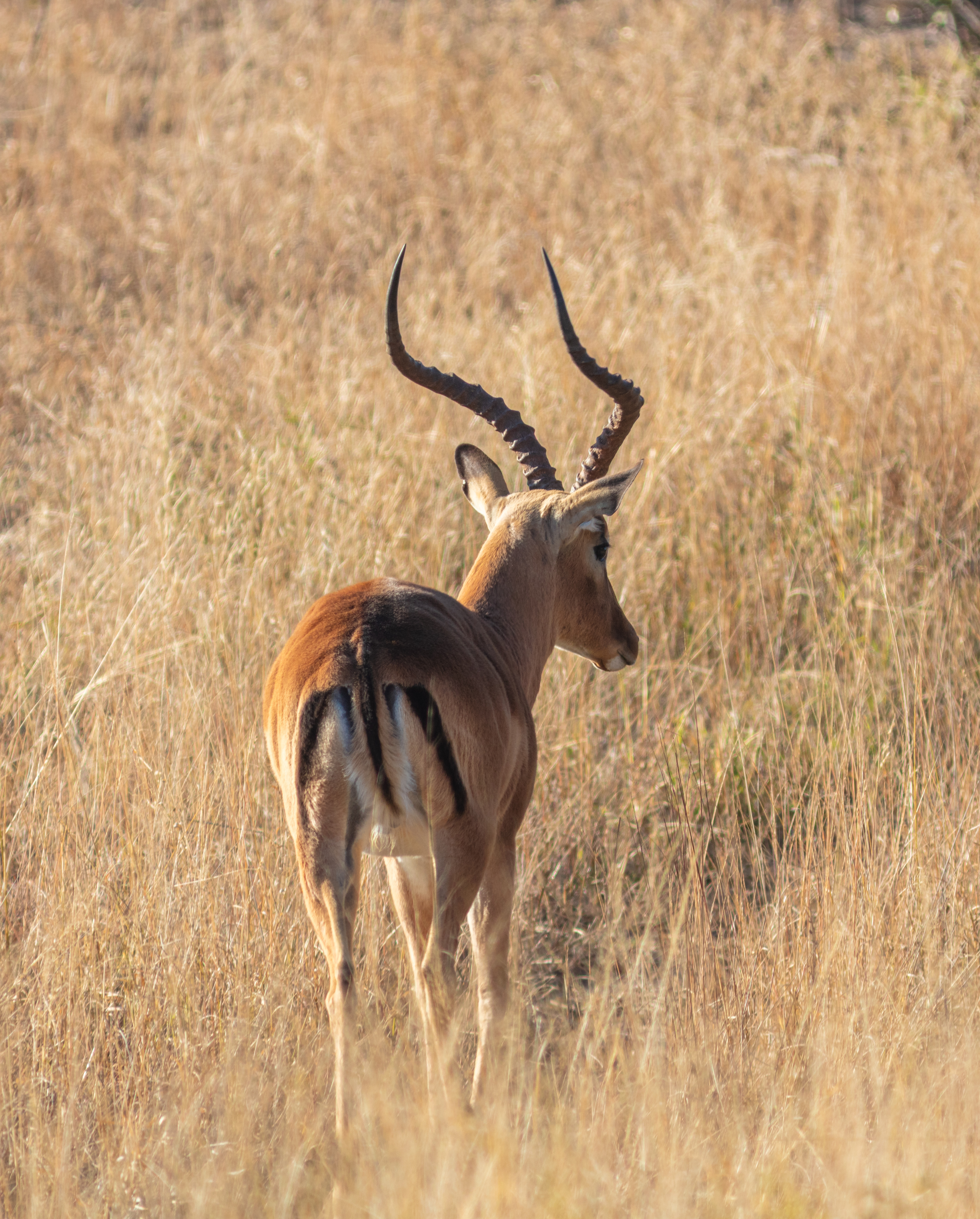
The Masai Mara National Park in Kenya is home to a vast array of wildlife, including the majestic impalas. These graceful antelopes are not only a stunning sight to behold but also play a crucial role in the ecosystem. However, with the increasing pressures of human activities and habitat loss, the conservation efforts for impalas have become essential to ensure a sustainable future in Masai Mara.
To protect and preserve the impala population, a number of conservation initiatives have been implemented within the park. These include:
- Creating protected areas: The establishment of designated areas within the Masai Mara National Park ensures that impalas have sufficient space to thrive without interference from human activities.
- Managing grazing lands: By carefully monitoring and managing the available grazing lands, conservationists can ensure that impalas have access to sufficient food resources, minimizing competition with other herbivores.
- Promoting anti-poaching efforts: Poaching not only puts the impalas at risk but also disrupts the delicate balance of the ecosystem. Therefore, strict anti-poaching measures have been implemented to deter illegal hunting and protect impalas from harm.
- Conservation education and community involvement: The local communities surrounding Masai Mara play a vital role in the success of impala conservation. Through education and awareness programs, these communities are empowered to become stewards of the impalas, ensuring their protection for future generations.
These ongoing conservation efforts for impalas serve as a testament to the commitment of Masai Mara National Park and its stakeholders in preserving the natural heritage of the region. The collaboration between wildlife authorities, conservation organizations, and local communities is vital in ensuring a sustainable future for the impalas and maintaining the delicate balance of the Masai Mara ecosystem.
Exploring the Impala Population Dynamics in Masai Mara National Park
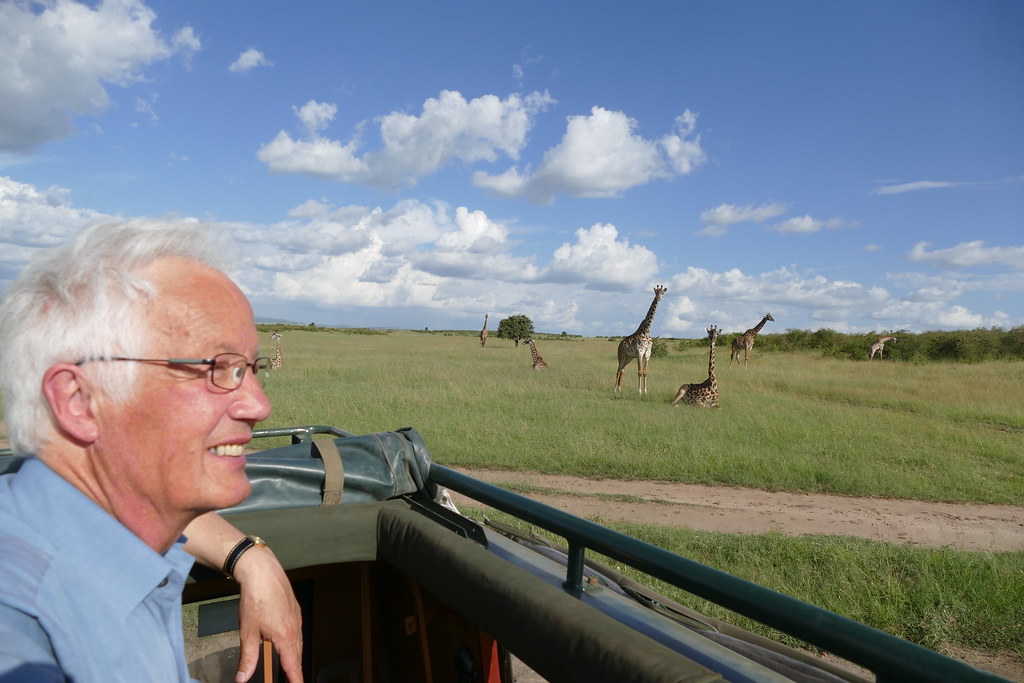
In the vast savannah of Masai Mara National Park, amidst the breathtaking landscapes, one species stands out with its grace and agility – the Impala. Known for their vibrant chestnut coats and striking black stripes, these medium-sized antelopes are a sight to behold. However, there is more to the Impala population than meets the eye, as their dynamics play a crucial role in maintaining the delicate balance of the park’s ecosystem.
To understand the Impala population dynamics, we delve into the fascinating world of their social structure. These highly sociable animals form herds of varying sizes, ranging from small groups to larger congregations. Within these herds, peaceful coexistence is maintained through dominance hierarchies. This intricate system ensures that the strongest males, easily recognizable by their impressive twisted horns, earn the right to mate with the females during the breeding season.
- The Impala population in Masai Mara National Park fluctuates throughout the year, influenced by factors such as food availability, predation, and reproductive success.
- The annual migration patterns of the wildebeest and other herbivores directly impact the Impala population, as they compete for vital resources such as grazing areas and water sources.
- Females, with their remarkable ability to synchronize births, give birth around the same time, creating a surge in young Impala, providing both challenges and opportunities for survival.
Monitoring the Impala population dynamics not only presents a captivating research opportunity but also helps conservationists ensure the long-term survival of this iconic species. Tracking their numbers, behavior, and habitat preferences allows us to better understand the overall health of the ecosystem and make informed decisions to protect their future.
Best Time to Witness Impala Mating Rituals in Masai Mara National Park
The Masai Mara National Park in Kenya is not only known for its breathtaking landscapes and diverse wildlife, but it is also a prime location to witness the mesmerizing impala mating rituals. These elegant creatures, with their slender bodies and graceful leaps, create a spectacle that is truly enchanting to behold.
For those planning a visit to the Masai Mara National Park, timing is key to witnessing the impalas’ mating rituals. The best time to experience this incredible display of courtship is during the dry season, typically from July to October. During this time, the vegetation is sparse, making it easier to spot the impalas as they gather in large groups, readying themselves for the mating season. The competition among the males is fierce, and they engage in fierce battles, clashing their impressive antlers in an attempt to prove their dominance and win the attention of the females.
- The impala mating rituals are a symbol of nature’s marvel, showcasing the power and beauty of these animals.
- Witnessing this behavior is an incredible opportunity for wildlife enthusiasts and photographers alike.
- The Masai Mara National Park provides an ideal setting for observing the impalas, with its open plains and abundant wildlife.
Whether you are a seasoned traveler or a first-time visitor to Kenya, observing the impala mating rituals in the Masai Mara National Park is an experience like no other. The sights, sounds, and energy of this display will leave you in awe of the wonders of nature.
Tips for Photographing Impalas in Masai Mara National Park
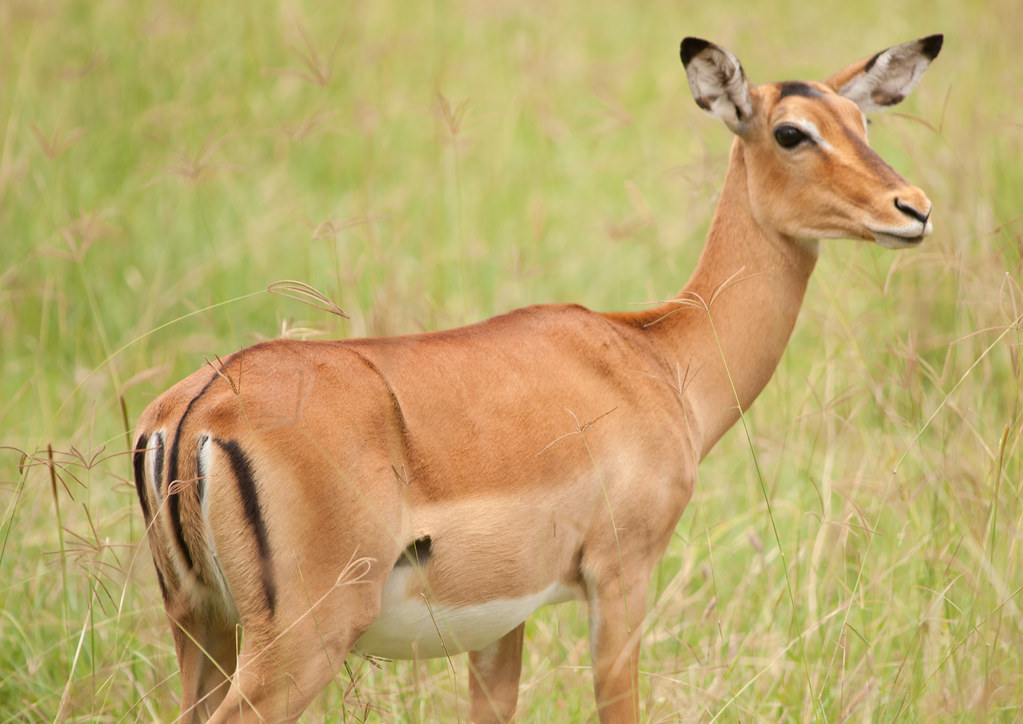
<p>
When visiting Masai Mara National Park, capturing the grace and beauty of impalas is a must for any wildlife photography enthusiast. These elegant antelopes, with their reddish-brown coats and lyre-shaped horns, can be found abundantly throughout the park's vast grasslands. Here are some useful tips to help you capture stunning photographs of impalas during your safari adventure.
</p>
<p>
1. <b>Timing is everything:</b> Plan your photographic sessions during the golden hours of sunrise and sunset. The soft, warm light during this time will illuminate the impalas beautifully, adding a magical touch to your shots. Getting up early or staying out late might be well worth it for that perfect shot.
</p>
<p>
2. <b>Play with perspective:</b> Impalas have a captivating way of moving through the grasslands, so take full advantage of their natural habitat to add interest to your compositions. By getting down low and shooting from ground level or incorporating the surrounding vegetation, you can create unique and dynamic perspectives that truly showcase the impalas' elegance.
</p>Q&A
Q: What makes the Masai Mara an ideal habitat for impalas?
A: The expansive grasslands and savannah of the Masai Mara provide impalas with an abundance of food and cover. The diverse ecosystem in this region offers them nutritious grazing options and ample hiding spots to evade predators.
Q: How do impalas adapt to their environment in the Masai Mara?
A: Impalas showcase remarkable adaptability in their environment. They have evolved to have a sleek reddish-brown coat, which helps them blend seamlessly with the grassy plains. Their incredible agility, speed, and exceptional jumping abilities enable them to maneuver effortlessly through the Mara’s varied terrain, dodging threats and predators.
Q: What are the key predators of impalas in the Masai Mara?
A: The Masai Mara is home to a variety of predators that view impalas as a desirable meal. Lions, leopards, cheetahs, and hyenas are among the most significant threats impalas must navigate daily. Impalas employ their keen senses and swift movements to detect and evade these predators, making each encounter a thrilling tale of survival.
Q: How do impalas communicate with each other?
A: Impalas have a sophisticated communication system that helps them coordinate group movements and keep each other alerted to potential dangers. They emit a variety of vocalizations, including a unique snorting sound, to signal the presence of predators. Additionally, impalas use visual cues such as posturing and tail-flagging to communicate with one another.
Q: What is the social structure of impalas in the Masai Mara?
A: Impalas exhibit a fascinating social structure characterized by both individual and group dynamics. They form mixed-sex herds, led by dominant males, known as rams or bulls, who engage in fierce battles to establish their hierarchy. Female impalas, or ewes, usually remain in these herds, while young males eventually leave to form bachelor groups until they are old enough to challenge the dominant males.
Q: How do impalas reproduce and raise their young?
A: Breeding among impalas occurs during specific periods known as rutting seasons. Males compete for the attention of females by displaying their impressive horns and engaging in intimidating territorial fights. Once the female impalas give birth, they secrete a hormone that suppresses mating, which allows the majority of births to occur within a concentrated period, reducing vulnerability to predators. Mothers care for their young with great dedication, keeping them hidden and returning to nurse them periodically.
Q: What are some conservation measures in place to protect impalas in the Masai Mara?
A: The conservation efforts in the Masai Mara are crucial for safeguarding the impalas’ habitat and population. Collaborative initiatives involving local communities, wildlife authorities, and conservation organizations strive to combat poaching, protect their grazing lands, and maintain ecological balance. Continued monitoring and education programs not only help protect impalas but also raise awareness about the importance of their preservation within the greater ecosystem.
Insights and Conclusions
And with that, we bring our exploration of the magnificent Impala to a graceful close. As we bid adieu to this awe-inspiring creature, let us remain captivated by the sheer beauty of its existence.
From the depths of its soulful eyes to the gracefulness of its gentle stride, the Impala has reminded us of the extraordinary wonders that the natural world beholds. We have delved into the intricacies of its unique features, crafted over millennia of evolution to enhance survival in an unforgiving African landscape.
Through our journey, we have uncovered the Impala’s cunning ability to navigate the wild, evading predators with unparalleled agility. We marveled at its graceful leaps, defying gravity as if time stood still. In every bound, the Impala showcased the epitome of resilience and adaptability, reminding us of the indomitable spirit that resides within each living being.
But beyond its physical prowess, the Impala represents something greater. It symbolizes the delicate web of life, where every player has a role to fulfill. The grazing of its delicate lips on the African savannah contributes to a symphony of interconnected existence, sustaining a delicate balance that binds us all.
So, as we conclude our rendezvous with the Impala, let us remember the valuable lessons it imparted upon us. Let us embrace the subtle reminder that nature, in all its splendor, is not just a backdrop for our stories, but an intricate character in its own right.
Though we may no longer witness the Impala’s elegant dance in the wild, its essence lingers in our collective consciousness. Let us carry forward the appreciation and admiration we have acquired, cultivating a deeper love for the treasures bestowed by the natural world.
And so, as we close the chapter on our enchanting encounter with the Impala, let us continue to seek out the whispers of nature, to unravel the secrets of the extraordinary beings that surround us. For the wonders of this world are waiting to be discovered, existing beyond the confines of words on a page, patiently waiting to be celebrated.




